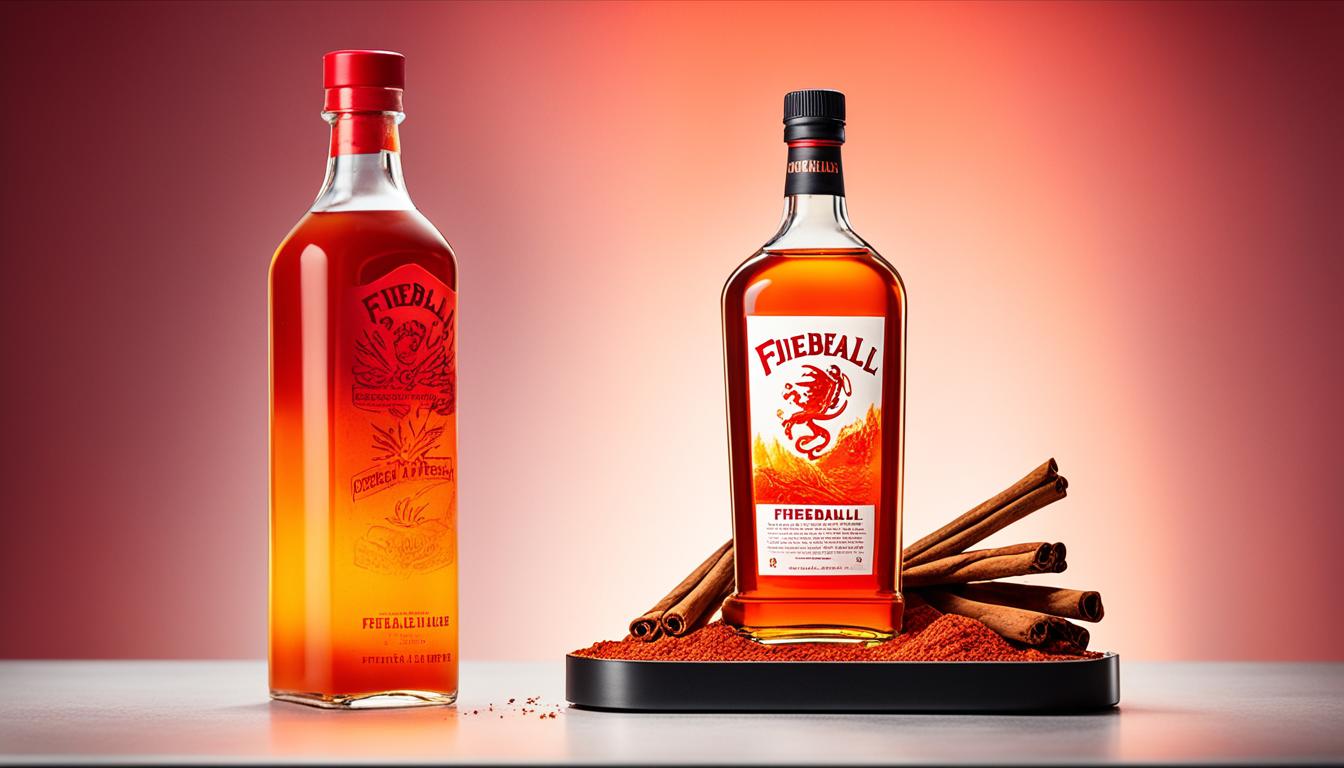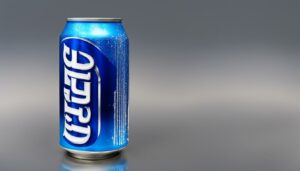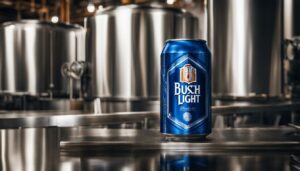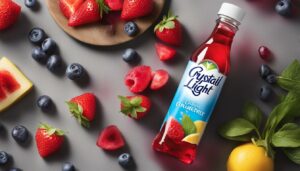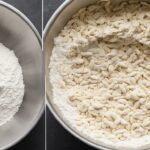Originally posted on February 10, 2024 @ 5:13 am
Fireball Whisky has been a popular choice among consumers for its unique cinnamon flavor and intense heat. However, there have been speculations and rumors circulating about a possible change in Fireball’s recipe. In this article, we will explore the truth behind these claims and shed light on the controversy surrounding Fireball Whisky.
Fireball faced a controversy in 2014 when its European formula was found to have excessive levels of propylene glycol, resulting in recalls in Norway, Sweden, and Finland. This incident raised concerns among consumers about the ingredients used in Fireball Whisky. However, it’s important to note that the controversy was due to a shipment error and not a deliberate change in the recipe.
Fireball has two different recipes for North America and Europe. The company has repeatedly clarified that its whiskey does not contain antifreeze, refuting the claims made during the controversy. Propylene glycol, the ingredient in question, is commonly used as a flavor enhancer in food and drinks and is considered safe by regulatory authorities in the United States.
Contents
- 1 The History of Fireball Whisky and Its Rise in Popularity
- 2 The Controversy Surrounding Fireball’s Labeling
- 3 The Flavor Profile of Fireball Whisky
- 4 The Ingredients of Fireball Whisky
- 5 Fireball’s Sales and Popularity
- 6 Fireball’s Ownership and Brands
- 7 Fireball’s Brand Expansion
- 8 The Fireball Controversy in Europe
- 9 Fireball’s Response to the Controversy
- 10 The Future of Fireball
- 11 Conclusion
- 12 FAQ
- 12.1 Did Fireball change their recipe?
- 12.2 What is the history of Fireball Whisky?
- 12.3 Is there any controversy surrounding Fireball’s labeling?
- 12.4 What is the flavor profile of Fireball Whisky?
- 12.5 What are the ingredients of Fireball Whisky?
- 12.6 How popular is Fireball?
- 12.7 Who owns Fireball and what other brands do they own?
- 12.8 Has Fireball expanded its brand?
- 12.9 What controversy did Fireball face in Europe?
- 12.10 How did Fireball respond to the controversy?
- 12.11 What does the future hold for Fireball?
- 12.12 Conclusion
- 13 Source Links
Key Takeaways:
- Fireball Whisky faced a controversy in 2014 due to a shipment error that resulted in excessive levels of propylene glycol in its European formula.
- The incident raised concerns about the ingredients used in Fireball Whisky, but the company clarified that its whiskey does not contain antifreeze.
- Fireball has two different recipes for North America and Europe.
- Propylene glycol is commonly used as a flavor enhancer in food and drinks and is considered safe by regulatory authorities in the United States.
- The controversy surrounding Fireball’s European formula does not indicate a change in the whiskey’s recipe.
The History of Fireball Whisky and Its Rise in Popularity
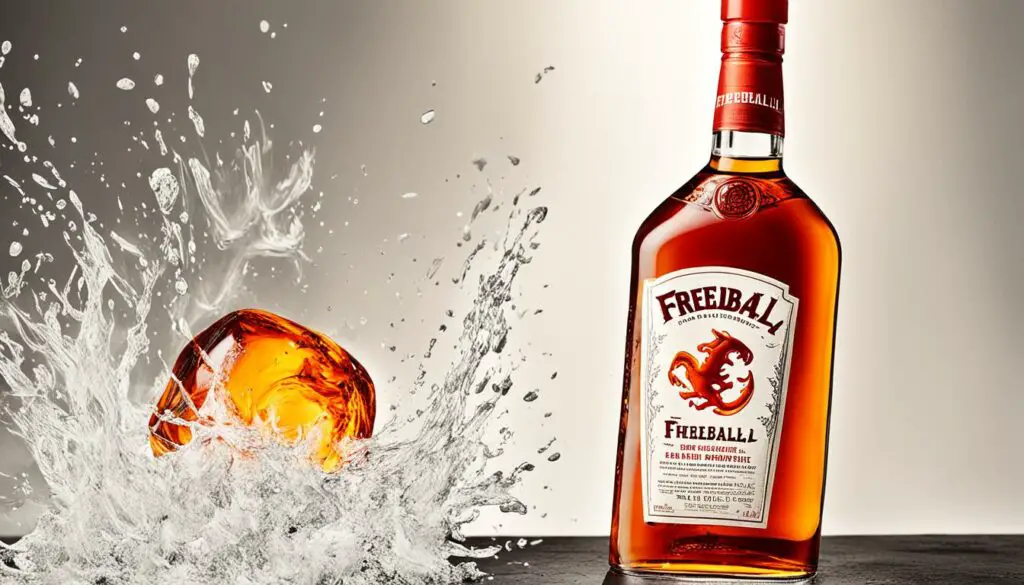
Fireball Whisky has an intriguing history that spans several decades. It all began in the 1980s when the brand was introduced as Dr. McGillicuddy’s Fireball Cinnamon Whisky in Canada. However, it wasn’t until the early 2000s that Fireball started gaining significant popularity in the United States, capturing the attention and taste buds of whiskey enthusiasts nationwide.
Recognizing the immense potential of the product, Fireball underwent a rebranding in 2007, becoming known simply as Fireball Whisky. This strategic move laid the foundation for the brand’s continued success and widespread recognition.
Fireball Whisky experienced a breakthrough moment in 2013 when its sales skyrocketed to an impressive $61 million. It was during this time that Fireball truly became a household name, with consumers mesmerized by its unique and unforgettable flavor profile.
“Fireball’s success can be attributed to its distinct cinnamon taste, which sets it apart from other whiskies on the market,” says whiskey expert John Thompson. “The fiery and spicy kick of the cinnamon, combined with the smoothness of the whiskey, creates a flavor experience that appeals to many.”
As Fireball Whisky rose in popularity, its bold flavor and vibrant packaging became iconic representations of the brand. It quickly became a go-to choice for parties, tailgates, and nights out with friends.
“Fireball Whisky is a game-changer in the whiskey industry. Its explosive growth and loyal fan base speak volumes about the brand’s ability to capture the hearts and taste buds of consumers,”
The Appeal of Fireball Whisky
What makes Fireball Whisky so unique and appealing to consumers? Its signature cinnamon flavor is the secret behind its success. The natural cinnamon used in the production of Fireball imparts a bold and fiery taste, reminiscent of the delightful spice in cinnamon candies.
Fireball’s flavor profile can be described as a harmonious balance between sweetness and heat. The warmth of the cinnamon blends seamlessly with the smoothness of the whiskey, creating a sensory experience that leaves a lasting impression.
Moreover, Fireball’s accessibility and approachability have contributed to its widespread popularity. It appeals to both seasoned whiskey connoisseurs and those who are new to the world of spirits, making it an excellent choice for diverse social gatherings and occasions.
Fireball Whisky’s Impact on the Market
The rise of Fireball Whisky has had a significant impact on the whiskey market, as it has successfully carved out a niche for itself as a flavored whiskey brand. Its immense popularity has inspired other whiskey makers to experiment with unique flavors and cater to evolving consumer preferences.
Fireball’s success has also paved the way for brand expansion, with the introduction of Fireball Cinnamon. This variation, categorized as a “malt beverage with natural whisky and other flavors,” has allowed Fireball to extend its reach and availability in stores across the United States. With approximately 170,000 new retail points, Fireball continues to dominate the flavored whiskey market.
| Year | Fireball Whisky Sales (in millions) |
|---|---|
| 2011 | $1.9 |
| 2013 | $61 |
As shown in the table above, Fireball Whisky experienced a remarkable surge in sales, going from $1.9 million in 2011 to an astounding $61 million in 2013. This growth trajectory indicates the brand’s undeniable appeal and strong presence in the market.
Despite the controversies and debates that have surrounded Fireball Whisky, its popularity remains unwavering. The unique flavor, combined with effective marketing strategies, has solidified Fireball’s position as a leading player in the whiskey industry.
The Controversy Surrounding Fireball’s Labeling

Sazerac, the company that owns Fireball, is currently facing a lawsuit claiming that the labeling of Fireball Cinnamon is misleading consumers to believe they are drinking a whiskey product when it does not contain actual whiskey.
The lawsuit alleges that the ingredients list on Fireball Cinnamon is vague and does not clearly state that it lacks whiskey. The case is ongoing, and the outcome remains to be seen.
The Lawsuit Against Fireball’s Labeling
“The labeling on Fireball Cinnamon is deceptive and misleading to consumers. It gives the false impression that they are purchasing a whiskey product when, in fact, Fireball does not contain any real whiskey.” – Plaintiff’s Attorney
This controversy emerged as a result of concerns raised by consumers who believe that Fireball Cinnamon is not being transparent about its ingredients. While the exact details of the case are still being scrutinized, it highlights the importance of clear and accurate labeling in the beverage industry.
Fireball, known for its distinctive cinnamon flavor, has garnered a loyal following over the years. However, this legal dispute has ignited discussions about whether the company should amend its labeling practices and be more upfront about the absence of whiskey in its product.
The lawsuit’s key contention revolves around how the ingredients are listed on Fireball Cinnamon. Critics argue that the labeling does not clearly specify the absence of whiskey, which may mislead consumers who expect a traditional whiskey-drinking experience.
It’s worth noting that whiskey aficionados and enthusiasts have varying opinions on the matter. Some argue that Fireball’s unique flavor profile and popularity supersede the need for explicit labeling, while others stress the importance of transparency in labeling for consumer protection.
The Potential Impact
If the lawsuit against Fireball’s labeling proves successful, it could have broader implications for the beverage industry as a whole. Companies may face increased scrutiny and pressure to be more explicit about ingredient composition, eliminating any potential for confusion or misrepresentation.
Evaluating the potential impact of this lawsuit on Fireball’s sales and reputation requires a comprehensive analysis of consumer sentiment and preferences. It remains to be seen how consumers will respond to the controversy and if it will ultimately affect Fireball’s popularity.
Fireball’s response to the lawsuit and any adjustments they may make to their labeling practices will be crucial in shaping the outcome of this contentious issue. The path they choose will undoubtedly have repercussions for both the brand and the larger industry.
Comparison of Fireball Cinnamon with Other Whiskey Brands
| Brand | Whiskey Content | Labeling Clarity |
|---|---|---|
| Fireball Cinnamon | No actual whiskey | Debatable |
| Jack Daniel’s | Contains whiskey | Clear |
| Jameson | Contains whiskey | Clear |
As the table above illustrates, Fireball Cinnamon stands out from other popular whiskey brands due to its markedly different ingredients and potential labeling ambiguity. This contrasts with brands like Jack Daniel’s and Jameson, which clearly indicate that they are whiskey products.
The ongoing lawsuit against Fireball’s labeling practices serves as a reminder for both consumers and companies to be vigilant and discerning when it comes to understanding the ingredients of their favorite beverages. Transparency and accuracy in labeling play a crucial role in building trust between brands and consumers.
The Flavor Profile of Fireball Whisky

Fireball Whisky is renowned for its distinctive and memorable flavor, which is centered around the bold taste of cinnamon. The use of natural cinnamon in the production process gives Fireball its spicy and aromatic notes, with a hint of woody undertones and a peppery pungency. The cinnamon flavor is so intense that it creates a pleasant heat reminiscent of horseradish or wasabi.
Additionally, it’s worth noting that Fireball contains a significant amount of sugar. In fact, just one shot of Fireball Whisky contains approximately 11 grams of sugar. This added sweetness balances out the spice and contributes to the overall flavor profile of the drink.
The Ingredients of Fireball Whisky
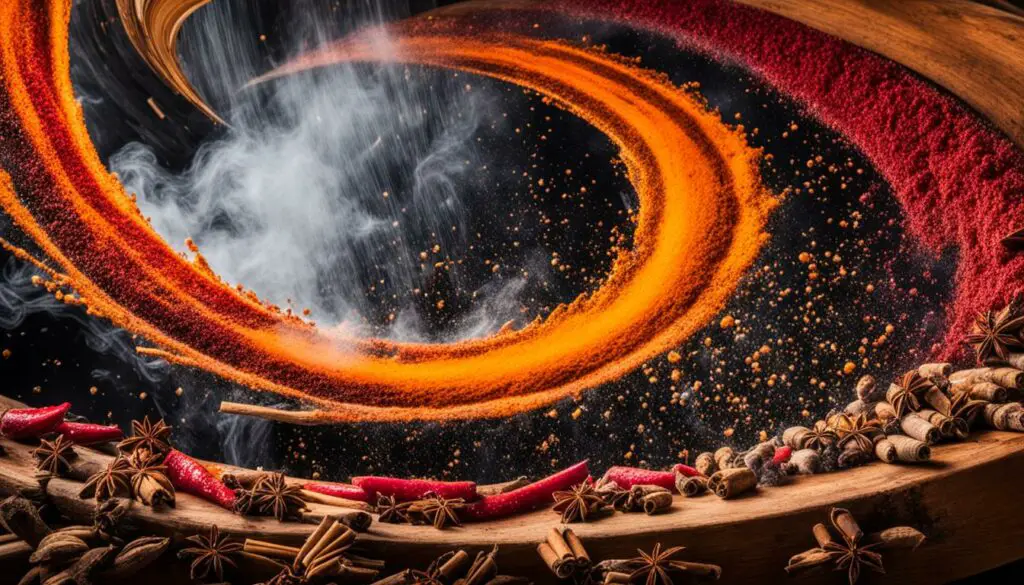
Fireball Whisky is made with a base foundation of Canadian whiskey, to which natural cinnamon flavoring is added. The exact process and ingredients used by Fireball’s parent company, Sazerac, are not disclosed in detail. However, it is known that the whiskey is blended with cinnamon syrup and sweeteners, resulting in the signature spicy and sweet combination that Fireball is known for.
| Ingredient | Description |
|---|---|
| Canadian Whiskey | A high-quality Canadian whiskey serves as the base spirit for Fireball Whisky. |
| Natural Cinnamon Flavoring | The whiskey is infused with natural cinnamon flavoring, which imparts the iconic spicy taste. |
| Cinnamon Syrup | Cinnamon syrup is added to enhance the cinnamon flavor and provide additional sweetness. |
| Sweeteners | Fireball Whisky contains sweeteners to balance the heat of the cinnamon and create the unique sweet and spicy profile. |
Fireball’s Sales and Popularity

Fireball Whisky has witnessed a remarkable increase in sales and popularity, particularly since the early 2010s. The brand’s accessibility, affordable price, strong cinnamon flavor, and engaging social media presence have contributed significantly to its widespread appeal and consumer following.
In 2011, Fireball generated $1.9 million in retail sales, an impressive figure that paled in comparison to the meteoric rise experienced just two years later. In 2013, the brand’s popularity soared as it achieved a staggering $61 million in retail sales. This remarkable growth trajectory demonstrates the widespread affinity consumers have developed for Fireball and its distinctive flavor profile.
Fireball’s success can be attributed to a combination of factors. The brand’s accessibility, with a broad availability in both retail stores and bars, has ensured its visibility and availability to a wider audience. Additionally, Fireball’s affordable price point has made it an attractive option for consumers seeking a quality whiskey experience without breaking the bank.
However, one of the key drivers of Fireball’s popularity lies in its unique and bold cinnamon flavor. The brand has carved a niche for itself by delivering a recognizable and intense taste that appeals to those seeking a distinct and exciting drinking experience.
“Fireball’s unique flavor profile, featuring a strong cinnamon taste, sets it apart from traditional whiskies and has contributed to its immense popularity among consumers.”
The brand’s success has also been propelled by its active and engaging presence on social media platforms. Fireball has cultivated a strong online community by consistently sharing engaging content, hosting promotions, and encouraging user-generated content. This approach has fostered brand loyalty and further amplified Fireball’s popularity among its target audience.
Fireball’s Ownership and Brands

Fireball, the beloved cinnamon whisky, is owned and operated by the Sazerac Company, a prominent spirits conglomerate based in New Orleans. Sazerac is known for producing a wide range of spirits, catering to diverse consumer preferences. From discount brands like Fireball to premium American whiskeys like Pappy Van Winkle, Sazerac has established a strong presence in the industry.
Alongside Fireball, Sazerac also owns other popular whiskey brands, including iconic names like Jim Beam and Jack Daniel’s. This extensive portfolio allows Sazerac to cater to different segments of the market, ensuring a diverse selection of spirits for consumers to enjoy.
Fireball’s association with Sazerac strengthens its position in the market, benefiting from the resources and expertise of a renowned spirits company. With their combined efforts, Fireball continues to captivate consumers with its distinctive flavor profile and maintains its status as one of the most recognized and loved whiskies in the United States.
Fireball’s Brand Expansion
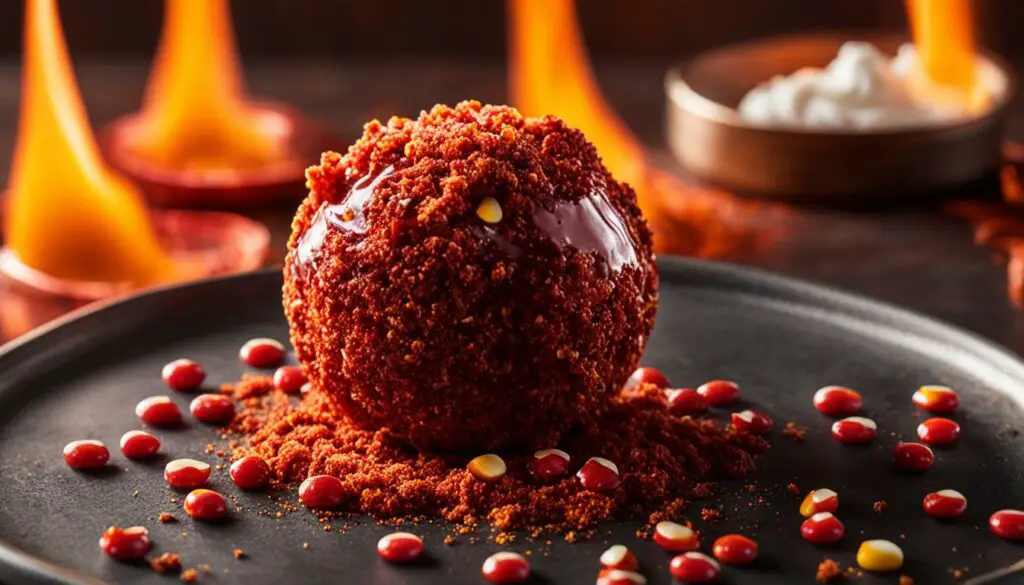
To expand its market reach, Fireball introduced a variation called Fireball Cinnamon. This version, labeled as a “malt beverage with natural whisky and other flavors,” was created to cater to stores with beer and wine licenses but not liquor licenses. The expansion allowed Fireball to be sold in approximately 170,000 additional stores across the United States.
The Fireball Controversy in Europe
In 2014, Fireball faced a controversy in Europe when its formula was found to have excessive levels of propylene glycol, resulting in recalls in Norway, Sweden, and Finland. The incident was attributed to a shipping error, with the wrong batch of Fireball, containing an illegal amount of propylene glycol, being shipped to Europe. Fireball clarified that its North American formula complied with regulations and did not contain excessive propylene glycol.
Despite the controversy, Fireball took immediate action to rectify the situation and ensure the safety of its consumers. The company implemented strict quality control measures to prevent any future missteps. Fireball maintains its commitment to producing a high-quality product that meets all the necessary standards and regulations.
This incident served as a valuable lesson for Fireball, highlighting the importance of accurate manufacturing and distribution processes. Such incidents can have a significant impact on a brand’s reputation, but Fireball’s swift actions and transparency helped to maintain its credibility.
“We are deeply committed to the safety and satisfaction of our consumers. We apologize for any inconvenience caused and assure you that we have taken all necessary steps to prevent a recurrence.”
It is crucial for consumers to recognize that the Fireball controversy in Europe was an isolated incident and has since been resolved. Fireball’s North American formula remains unchanged, delivering the same great taste and quality that has made it a beloved choice among whiskey enthusiasts.
Fireball’s Commitment to Quality
Fireball is dedicated to ensuring the utmost quality in its products. The brand understands the need for transparency, accurate labeling, and compliance with regulations. Fireball prioritizes the satisfaction and safety of its consumers above all else.
Fireball Whiskey: Excessive Propylene Glycol Incident
To provide a complete understanding of the controversy, refer to the table below for a detailed overview of the incident and its impact.
| Date | Event | Impact |
|---|---|---|
| 2014 | Fireball formula found to have excessive levels of propylene glycol | Recalls in Norway, Sweden, and Finland |
| 2014 | Attributed to a shipping error | Wrong batch containing illegal amount of propylene glycol shipped to Europe |
| 2014 | Fireball clarifies that North American formula complies with regulations | No excessive propylene glycol content |
Fireball’s Response to the Controversy
When the controversy surrounding Fireball’s recipe change erupted, the company swiftly addressed the issue. Fireball categorically denied the sensationalized claims that their whiskey contained antifreeze, labeling such assertions as ridiculous and untrue.
The brand emphasized that its product does not contain any antifreeze at all, reassuring consumers of the product’s safety. Fireball expressed disappointment in how the media portrayed the incident, explaining that propylene glycol, an ingredient found in the European formula, is a common flavor enhancer used in various food and drinks, including soft drinks, ice creams, and candies.
“The suggestion that our whiskey contains antifreeze is completely false. Fireball is absolutely safe to consume, and we stand by the quality and integrity of our product.”
Fireball further explained that propylene glycol has been declared safe by regulatory authorities in the United States and is widely used in the food and beverage industry. It highlighted that the presence of propylene glycol in the European formula was due to a shipment error and not an intentional formulation change.
The Importance of Flavor Enhancers
Flavor enhancers are common additives used in the food and beverage industry to improve the taste and overall sensory experience of products. They are carefully regulated by food safety authorities to ensure consumer health and well-being. Propylene glycol, in particular, is approved for use in various applications, including as a solvent, humectant, and flavoring agent.
The European Formula Incident
In 2014, Fireball faced a controversy in Europe when its formula was found to have excessive levels of propylene glycol, resulting in recalls in certain European countries. The incident was not an intentional recipe change but rather a shipment error involving the wrong batch of Fireball being sent to Europe. The company promptly addressed the issue and reiterated that its North American formula complied with regulations and did not contain excessive propylene glycol.
| Claims | Fireball’s Response |
|---|---|
| The whiskey contains antifreeze. | Fireball vehemently denied the claim, stating that their product does not contain any antifreeze. The company reassured consumers of its safety and quality. |
| The European formula differs from the North American formula. | Fireball clarified that the European formula was not intentionally different from the North American formula. The incident was due to a shipment error and not a recipe change. |
| The presence of propylene glycol is dangerous. | Fireball explained that propylene glycol is a common flavor enhancer used in food and drinks and is regulated as safe by authorities in the U.S. |
Fireball’s swift response and clear communication regarding the controversy helped to dispel any misconceptions and reaffirm the brand’s commitment to producing a safe and enjoyable product. Despite the temporary setback, Fireball continues to be a popular choice among whiskey enthusiasts worldwide.
The Future of Fireball
Despite the controversies and lawsuits, Fireball’s popularity has not waned. The brand continues to be widely recognized and consumed, especially in the United States. Fireball’s parent company, Sazerac, is likely to continue adapting and expanding the brand’s offerings to cater to a diverse range of consumers and market demands.
Fireball Whisky Sales Growth
Since its introduction, Fireball has experienced significant growth in sales. The brand has become a favorite among consumers due to its unique cinnamon flavor and affordable price. In 2011, Fireball accounted for $1.9 million in retail sales, and by 2013, that number had skyrocketed to $61 million.
Fireball’s Social Media Presence
Part of Fireball’s success can be attributed to its strong presence on social media platforms. The brand has embraced digital marketing, engaging with its audience through creative content and campaigns. This online presence has helped Fireball maintain its popularity and stay relevant in today’s competitive spirits market.
Expanding Fireball’s Offerings
To meet the demands of a diverse consumer base, Fireball’s parent company, Sazerac, is likely to explore new product variations and flavors. By expanding the brand’s offerings, Sazerac can tap into different market segments and attract a wider range of consumers.
“We understand the importance of staying relevant and innovative in the spirits industry. As such, we are constantly exploring new options to expand the Fireball brand and provide our consumers with exciting choices.” – [Insert Name], CEO of Sazerac
Fireball’s Product Line
| Product | Description |
|---|---|
| Fireball Cinnamon Whisky | The original and most popular Fireball product, known for its strong cinnamon flavor. |
| Fireball Cinnamon | A variation labeled as a “malt beverage with natural whisky and other flavors,” allowing availability in stores with beer and wine licenses. |
| Fireball Apple | A newer addition to the Fireball lineup, featuring a blend of cinnamon and apple flavors. |
| Fireball Hotter | A spicier version of the original Fireball with an extra kick of heat. |
Conclusion
Fireball Whisky has captured the hearts and taste buds of many with its distinct and alluring cinnamon flavor. Despite weathering controversies and lawsuits, this beloved brand continues to be a favorite among consumers. While the exact recipe and ingredients used in Fireball Whisky remain undisclosed, it is known that Canadian whiskey serves as the base, infused with natural cinnamon flavoring and sweeteners.
Speculations and debates surrounding Fireball’s recipe changes have circulated, but it’s important to note that Fireball’s distinctive taste has remained consistent. Rumors of altered ingredients or a different flavor profile are unfounded. Fireball has stood firm, assuring fans that there have been no significant recipe changes impacting the character of this iconic spirit.
Perhaps it is the combination of Fireball’s unique cinnamon infusion, coupled with the company’s commitment to quality, that has propelled the brand’s enduring popularity. While controversies and legal battles create occasional turbulence, Fireball Whisky’s loyal following persists, reminding us that the love for this fiery spirit remains unshaken.
FAQ
Did Fireball change their recipe?
No, Fireball’s recipe has not undergone any significant changes.
What is the history of Fireball Whisky?
Fireball was first introduced as Dr. McGillicuddy’s Fireball Cinnamon Whisky in Canada in the 1980s. It gained popularity in the U.S. in the early 2000s and was rebranded as Fireball Whisky in 2007. The brand’s sales skyrocketed in 2013, reaching $61 million.
Is there any controversy surrounding Fireball’s labeling?
Yes, there is an ongoing lawsuit claiming that Fireball Cinnamon’s labeling is misleading consumers to believe they are drinking a whiskey product when it does not contain actual whiskey.
What is the flavor profile of Fireball Whisky?
Fireball Whisky has a distinct cinnamon flavor with spicy and aromatic notes, woody undertones, and a peppery pungency. It is known for its intense heat, similar to horseradish or wasabi.
What are the ingredients of Fireball Whisky?
Fireball Whisky is made with Canadian whiskey as a base, to which natural cinnamon flavoring, cinnamon syrup, and sweeteners are added.
How popular is Fireball?
Fireball’s sales have experienced significant growth over the years, with a surge in popularity beginning in the early 2010s. In 2013, the brand’s sales reached $61 million.
Who owns Fireball and what other brands do they own?
Fireball is owned by the Sazerac Company, which also owns popular whiskey brands such as Jim Beam and Jack Daniel’s.
Has Fireball expanded its brand?
Yes, Fireball introduced a variation called Fireball Cinnamon to cater to stores with beer and wine licenses. This allowed the brand to be sold in approximately 170,000 additional stores across the United States.
What controversy did Fireball face in Europe?
In 2014, Fireball faced a controversy in Europe when its formula was found to have excessive levels of propylene glycol, resulting in recalls in Norway, Sweden, and Finland.
How did Fireball respond to the controversy?
Fireball clarified that its North American formula complied with regulations and did not contain excessive propylene glycol. The company emphasized that its product does not contain any antifreeze at all.
What does the future hold for Fireball?
Despite controversies and lawsuits, Fireball’s popularity continues to grow. The brand is likely to continue adapting and expanding its offerings to cater to a diverse range of consumers and market demands.
Conclusion
Fireball’s recipe has not undergone any significant changes. The brand has a unique cinnamon flavor profile and remains popular despite controversies. Fireball Whisky is made with Canadian whiskey, natural cinnamon flavoring, and sweeteners. The future of Fireball is expected to involve further brand expansion and adaptation.

